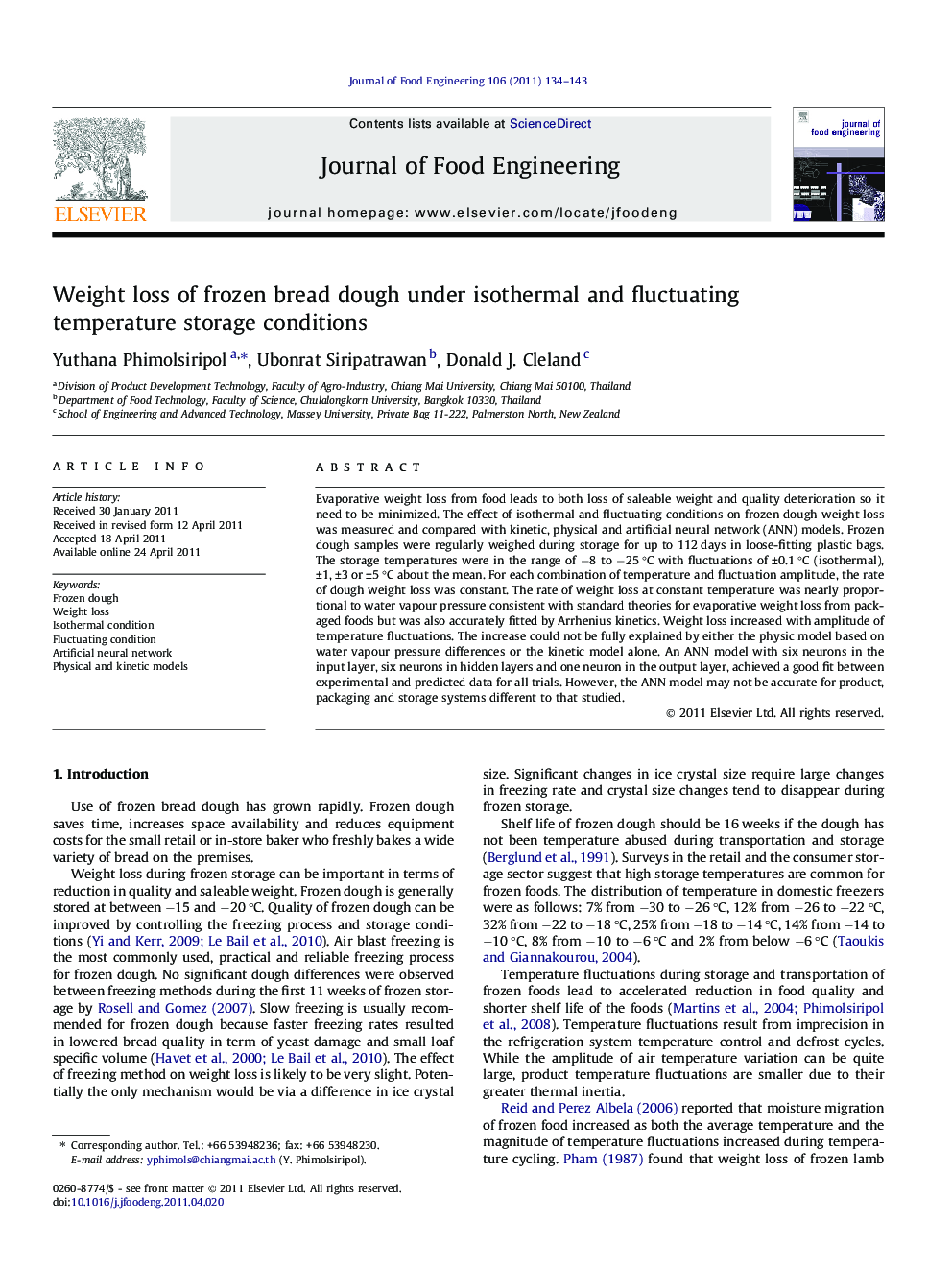| Article ID | Journal | Published Year | Pages | File Type |
|---|---|---|---|---|
| 223501 | Journal of Food Engineering | 2011 | 10 Pages |
Evaporative weight loss from food leads to both loss of saleable weight and quality deterioration so it need to be minimized. The effect of isothermal and fluctuating conditions on frozen dough weight loss was measured and compared with kinetic, physical and artificial neural network (ANN) models. Frozen dough samples were regularly weighed during storage for up to 112 days in loose-fitting plastic bags. The storage temperatures were in the range of −8 to −25 °C with fluctuations of ±0.1 °C (isothermal), ±1, ±3 or ±5 °C about the mean. For each combination of temperature and fluctuation amplitude, the rate of dough weight loss was constant. The rate of weight loss at constant temperature was nearly proportional to water vapour pressure consistent with standard theories for evaporative weight loss from packaged foods but was also accurately fitted by Arrhenius kinetics. Weight loss increased with amplitude of temperature fluctuations. The increase could not be fully explained by either the physic model based on water vapour pressure differences or the kinetic model alone. An ANN model with six neurons in the input layer, six neurons in hidden layers and one neuron in the output layer, achieved a good fit between experimental and predicted data for all trials. However, the ANN model may not be accurate for product, packaging and storage systems different to that studied.
